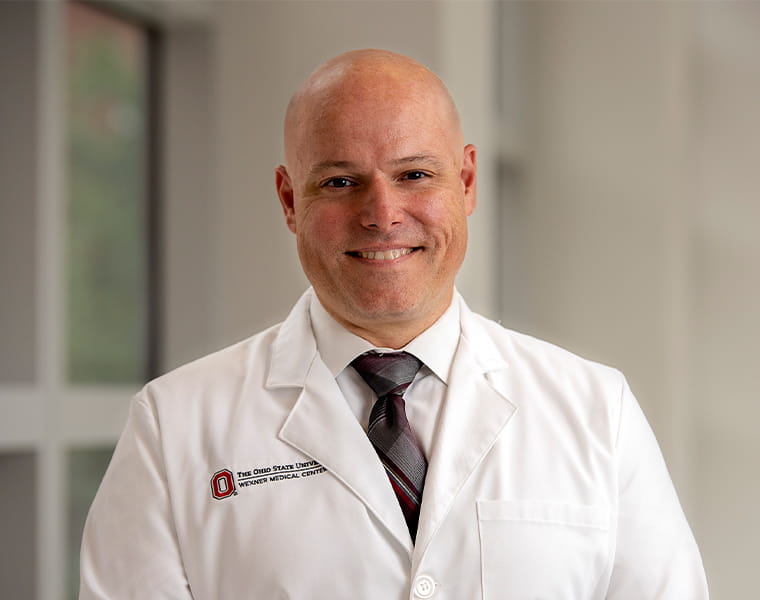July 25, 2024
COLUMBUS, Ohio – Two recent grants from the National Institutes of Health (NIH) and American Heart Association are helping fund research of a novel vascular stent being developed at The Ohio State University Wexner Medical Center. The multi-use retrievable stent has the potential to save lives by improving vascular surgery and drug delivery as well as expanding organ donation.
Bryan Tillman, MD, PhD, associate professor of surgery in the Division of Vascular Diseases and Surgery in the College of Medicine, received a $2.7 million grant from the National Heart, Lung, and Blood Institute of the National Institutes of Health. He will use the four-year grant to study if the stent can prevent scar tissue that forms after most vascular interventions, which results in the blockage of a blood vessel. Known as restenosis, this condition is why almost half of all vascular procedures fail in less than five years.

Currently, a drug-coated balloon is used to prevent restenosis but is not always effective. Only a limited amount of drug can stick to the balloon and may wash off and not reach its target, and the balloon can only be used briefly because it restricts blood flow.
Tillman and his team have developed a dumbbell-shaped stent that can be removed after use — leaving nothing behind — and serves as a vehicle to deliver drugs to the vessel wall while at the same time preserving blood flow to tissue that is past the stent. Tillman and co-investigator Saami Yazdani, PhD, an associate professor of engineering at Wake Forest University, will study not only if the novel stent is a more effective therapy for restenosis but if it can provide focused delivery of drugs to a specific area.
Tillman also received a Transformational Project Award of $300,000 from the American Heart Association to use a novel drug-delivery stent graft developed at Ohio State to investigate how inflammation contributes to aneurysm development. Aneurysms are a leading cause of death in the U.S. but the mechanisms behind aneurysm growth and rupture aren’t known. This study will look at if the stent graft can deliver therapies to halt aneurysm growth and rupture.
Previously, Tillman received a $2.5 million grant from the U.S. Department of Defense to study if his retrievable stent could be used in heavy casualty situations like in battlefields or during mass shootings. The stent’s simple design allows residents and doctors to use it to rapidly stop bleeding while waiting for surgeons. Tillman also developed magnetic sensors to track the stent’s position in the body without the need for sophisticated operating room equipment.
As part of a prior $1.3 million NIH grant, Tillman has also used the dumbbell-shaped stent to improve the quality of organs for transplantation.
Media contact: Amy Colgan, Ohio State Media Relations, Amy.Colgan@osumc.edu
###
